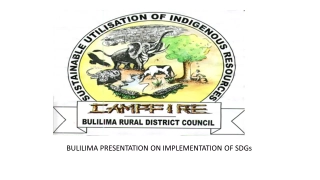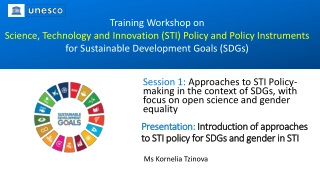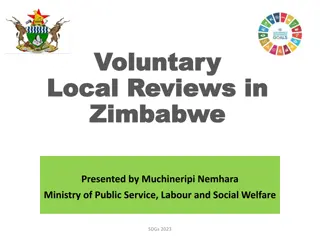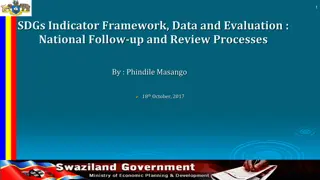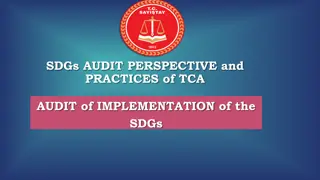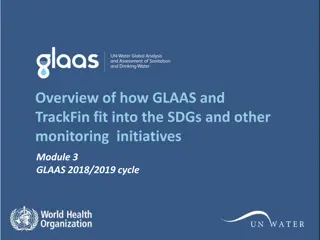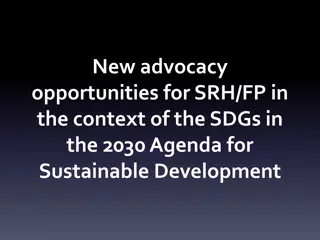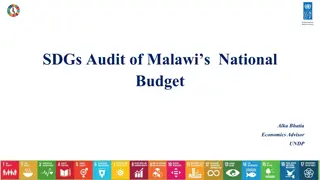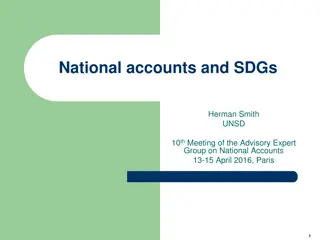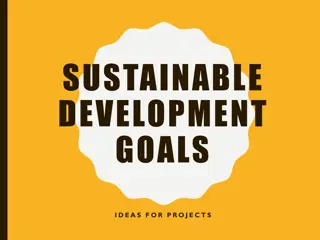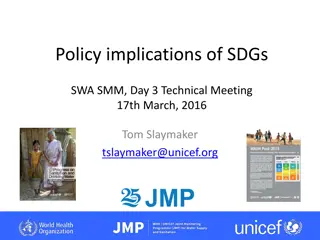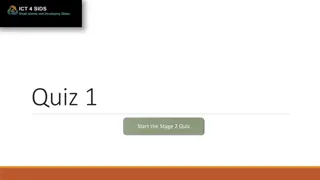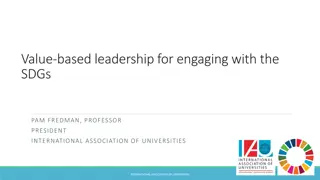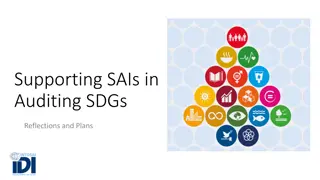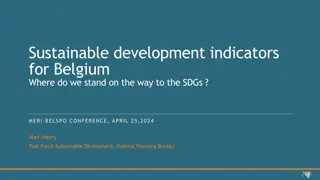
Best Institutional Models for Implementing the SDGs
Explore the governance challenge of implementing the SDGs and the different institutional models countries have chosen. Discover the role of the Centre of Government in driving the SDG agenda and coordinating complex initiatives, as well as the opportunities and challenges in implementing the SDGs. Gain insights from the OECD on planning and coordinating the Sustainable Development Goals.
Download Presentation

Please find below an Image/Link to download the presentation.
The content on the website is provided AS IS for your information and personal use only. It may not be sold, licensed, or shared on other websites without obtaining consent from the author. If you encounter any issues during the download, it is possible that the publisher has removed the file from their server.
You are allowed to download the files provided on this website for personal or commercial use, subject to the condition that they are used lawfully. All files are the property of their respective owners.
The content on the website is provided AS IS for your information and personal use only. It may not be sold, licensed, or shared on other websites without obtaining consent from the author.
E N D
Presentation Transcript
THE GOVERNANCE CHALLENGE OF IMPLEMENTING THE SDGS WHAT INSTITUTIONAL MODEL WORKS BEST? Sara Fyson Counsellor, Director s Office Public Governance and Territorial Development OECD 4 December, 2017
Institutional mechanisms are in place to guide the implementation of the SDGs Almost all countries report having an institutional mechanism in place to support the implementation strategy for the SDGs. But countries have chosen very different paths: new committees or mechanisms (permanent ministerial and inter-ministerial groups, strategy units) using existing institutions still reflecting on how best to organise to support the SDGs 63% of countries the Centre of Government is leading or co-leading the implementation of the SDGs Source: OECD 2016 Survey on Planning and Co-ordinating the Implementation of the Sustainable Development Goals (SDGs)
The role of the Centre of Government in driving the SDG agenda? Technically policy neutral Convening power linked to the head of government and political sensitivity CoGs expertise on supporting cross- cutting/horizontal projects Centres of government are currently leading initiatives that support the implementation of SDGs (gender equality, poverty reduction, resource efficiency, climate action, wellbeing) Support vertical as well as horizontal coordination to help localise the SDGs
Coordination of complex initiatives is one of the key roles of the Centre of Government From 2008-2012, has the number of cross-ministerial policy initiatives increased, decreased or remained fairly stable? (OECD CoG survey) Decreased 3% Remained fairly stable 38% Increased 59% The principal change is from routine coordination to pro-active, high-priority coordination (and implementation) 4
SDGs are seen as a real opportunity by Centres of Government Most positive aspects in the implementation of the SDGs as seen by by centres of government, 2016 Source: OECD 2016 Survey on Planning and Co-ordinating the Implementation of the Sustainable Development Goals (SDGs)
But SDGs will also require real commitment to better governance Most challenging aspects of planning of the implementation of the SDGs as seen by centres of government, 2016 Source: OECD 2016 Survey on Planning and Co-ordinating the Implementation of the Sustainable Development Goals (SDGs)
Institutional Mechanisms to implement the SDGs: early lessons More evidence is needed on the strengths and weaknesses of different institutional models Lesson 1: Ensuring political mandate to implement the SDGs Lesson 2: Adapting to the political culture but not to the political cycles Lesson 3: Importance of integrating the SDGs into the budget process
Institutional Mechanisms to implement the SDGs: early lessons (2) Lesson 4: Institutional coordination taking into account new realities Growing complexity in public service delivery Value of systems change rather than more traditional institutional structures Going beyond the executive Engaging local governments and authorities Lesson 5: Stakeholder participation rather than ex-post consultation
Key messages The breadth and complexity and long-term nature of the SDGs means that governments need to align policies to achieve them. The Centres of Government recognise that the SDGs are a governance challenge and yet at the same time an opportunity More evidence is needed on the strengths and weaknesses of different institutional models to deliver on the SDGs Lessons learned show that there is no single model but that similar challenges emerge between countries and countries can benefit from innovative solutions Opportunities for high level peer-to-peer exchange at the World Government Summit in Dubai (February 10, 2017).
THANK YOU www.oecd.org/gov

